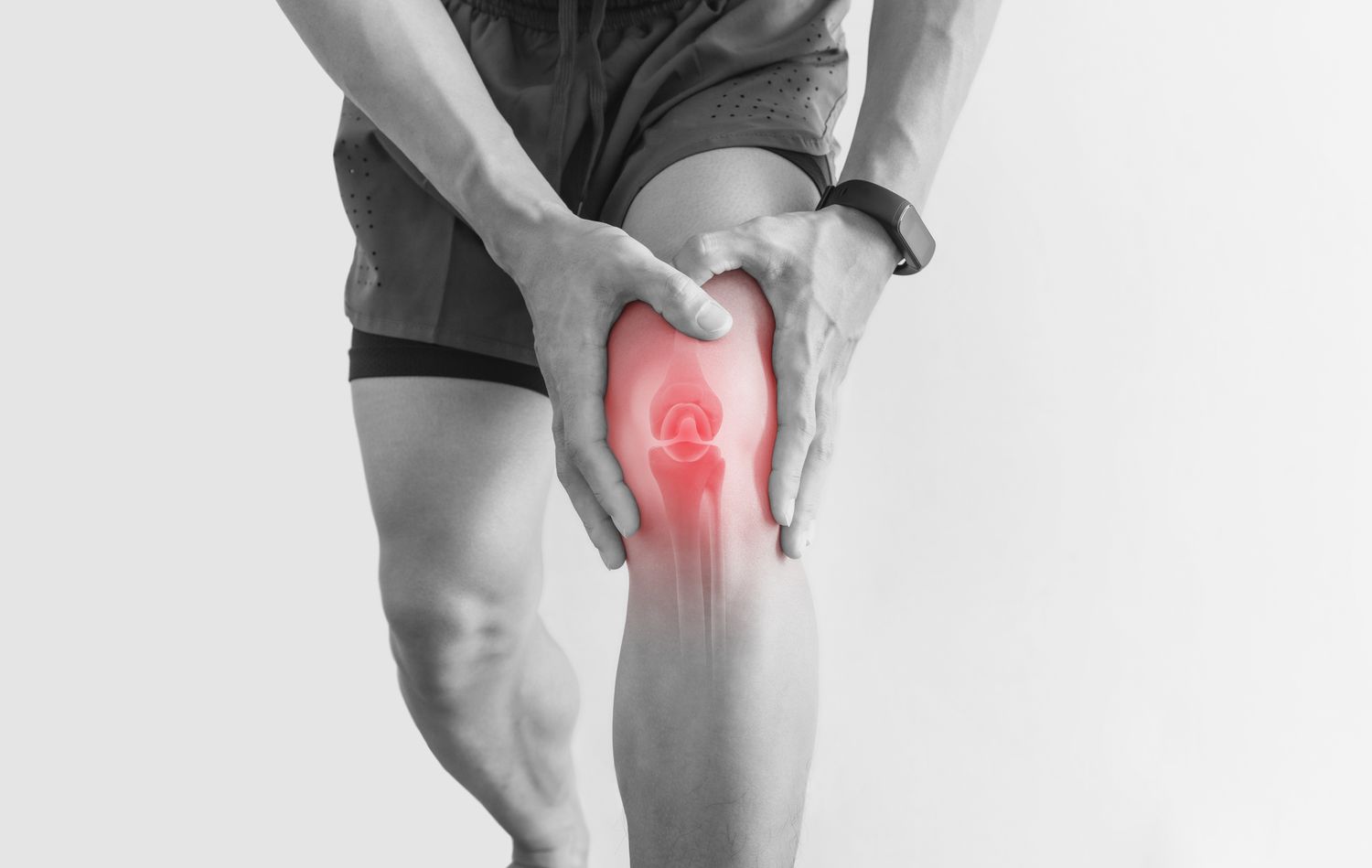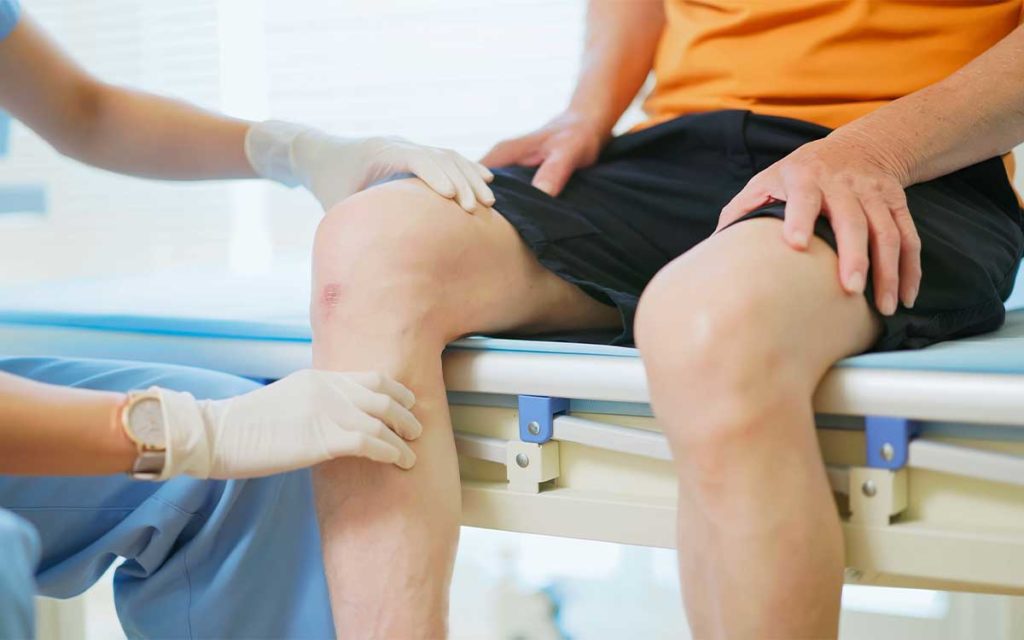
Knee pain can be a debilitating condition and is one of the most common medical complaints.
It affects people of all ages, but it is especially prevalent among middle-aged individuals. No matter how old you are or what kind of lifestyle you lead, knee pain may affect your quality of life and mobility.
But don’t worry! There are many options available to help regain healthy joints and alleviate any discomfort from knee pain.
In this article, we will discuss what these solutions are, so that you can make an informed decision about which treatment is best for you.
Understanding Knee Pain and Its Causes

Knee pain is a common experience for many individuals, often caused by overuse and stress on the joint. However, understanding its underlying causes can be incredibly complex.
Age-related degeneration, such as osteoarthritis, can cause serious damage to the knee joint that results in aching knees or stiffness around them. Injury due to sports activities or other physical exertion can also lead to inflammation and swelling which are key contributors to knee pain.
Additionally, bacterial infection may result from an injury that directly affects the cartilage found within your knee joint leading to further discomfort and distress when attempting certain movements or activities.
In some cases obesity has been linked with chronic knee problems due to increased pressure being put on the joint during movement; with regards to treatment for weight loss such as dieting has seen positive effects on reducing overall pain levels associated with general wear and tear of the ligaments surrounding it.
Proper stretching before exercise or activity might also reduce chances of developing soreness in your knees due to maintaining flexibility around them – thus helping maintain mobility throughout life.
Ultimately there is no one size fits all approach when it comes to addressing individual cases of acute or chronic knee pain – but understanding more about what could potentially be causing it gives you greater knowledge when exploring possible treatments available out there so you can get back onto your feet again feeling comfortable!
Treating Knee Pain with Non-Invasive Methods

Treating knee pain with non-invasive methods can be an effective alternative to surgery or prescription medications. Physical therapy, massage, and chiropractic care are all options that can help improve joint mobility and reduce inflammation without the need for invasive procedures.
Additionally, there are lifestyle changes that may help relieve knee pain, such as losing weight, avoiding high-impact activities like running on hard surfaces, wearing appropriate footwear to support your joints when exercising, and supplementing your diet with anti-inflammatory foods.
If you’re experiencing chronic knee pain despite trying conservative treatments, a doctor may recommend injections of cortisone or other medications to reduce swelling in the affected area.
While these treatments have varying levels of success depending on the individual patient and the severity of their condition, they provide a viable solution for those looking for relief from their knee discomfort without needing more drastic measures.
When Surgery is Necessary to Relieve Knee Pain
When it comes to relieving knee pain, knee surgery may be the only option for some individuals. Surgery can help reduce inflammation and restore joint movement, making it easier to get back to daily activities without pain.
Different types of surgeries are available depending on the cause of your knee pain and how severe it is. Arthroscopy, or keyhole surgery, may be used if there is a torn ligament or meniscus in the knee joint that needs repairing.
Total or partial knee replacements are an option when arthritis has caused extensive damage to the cartilage surrounding the bones in a joint. Another type of surgery is osteotomy where one or more bones around the affected joint are cut and realigned to relieve pressure from arthritic joints and improve mobility.
No matter what kind of procedure you undergo, physical therapy afterward will be recommended as part of the recovery process so that you can regain full strength and range of motion in your joints again.
Rehabilitating Your Joints After Injury or Surgery

Rehabilitating your joints after an injury or surgery can be a lengthy process, but the end goal is to help you regain a healthy range of motion and stability. Physical therapy plays an important role in helping to rebuild strength and mobility around the affected joint, focusing on exercises that promote flexibility, coordination, balance, and endurance.
Your physical therapist will provide tailored guidance for strengthening muscles surrounding the knee joint through stretching, strengthening moves as well as low-impact activities like swimming or biking.
In some cases where swelling or pain persists despite physical therapy treatments, your doctor may recommend medications such as nonsteroidal anti-inflammatory drugs (NSAIDs) which can reduce inflammation in the knee joint and make it easier to move about with less discomfort.
Surgery may also become necessary if the damage is severe enough; arthroscopic surgery uses small incisions and specialized tools to repair torn ligaments or release synovial tissues blocking movement within the knee joint while minimally invasive procedures like stem cell injections have been found effective at aiding tissue regeneration without extensive recovery time needed afterward.
Ultimately though whatever treatment path you choose should always involve consulting with a qualified physician who can accurately diagnose any underlying issues causing pain so that together you can find a solution that works best for restoring healthy joints.
Staying Active While Managing Knee Pain

Staying active is a key component of managing knee pain and regaining healthy joints. However, it can be difficult to stay motivated when your knees are in constant pain. Fortunately, there are several ways to exercise without putting too much stress on the joints.
Low-impact activities such as swimming, water aerobics, or walking can help keep you fit while providing relief from painful symptoms. Yoga and tai chi are also great options for improving flexibility and strengthening the muscles around the affected joint.
Additionally, physical therapy exercises prescribed by a doctor may help reduce inflammation and improve the range of motion in the knee joint.
With enough discipline and patience, you’ll be able to find an activity that works best for you while reducing your risk of further injury or worsening symptoms over time.
Conclusion

Knee pain is a common complaint and can significantly affect the quality of life. Fortunately, there are many options available to regain healthy joints and reduce knee pain.
Physical therapy, bracing, medications, lifestyle modifications such as weight loss, or exercise programs may be recommended by your doctor depending on the cause of the pain.
In more severe cases where other treatments fail to provide relief from chronic knee pain, surgery may be recommended as a last resort to restore mobility and return patients to their daily activities with minimal discomfort.
No matter what treatment option you choose for your knee condition, understanding the possible causes and risks associated with each one will help ensure that you make an informed decision about which treatment is best for you.





